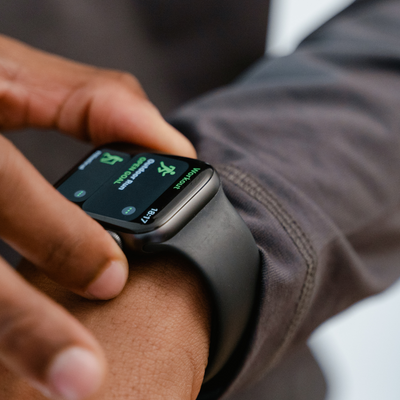If you’re a commercial driver with sleep apnea, you may be stuck at a crossroads between CPAP and trucking. Do you have to undergo CPAP therapy to treat your sleep apnea?
Or maybe you recognize symptoms of OSA, but they don’t interfere with your driving. Do you have to get a clinical diagnosis to keep your job?
The life and livelihood of a professional driver depends on their ability to safely operate and drive a commercial vehicle (CMV). And because the effects of sleep apnea can interfere with safe driving, professional drivers are obligated to diagnose and treat OSA before getting behind the wheel.
Unfortunately, the regulations around screening and diagnosing OSA among CMV drivers are not clearly defined by the Department of Transportation (DOT). To clarify the DOT-sleep apnea link for CMV drivers, we’ve laid out answers to your most pressing questions.
What are the DOT Requirements for Sleep Apnea?
To receive and maintain a Commercial Driver’s License (CDL), professional truck drivers must undergo a medical exam that assesses their “medical fitness for duty.” This DOT physical is administered by a medical examiner who assesses driver fitness based on standards set by the state and the DOT’s Federal Motor Carrier Safety Administration (FMCSA). During the physical, the medical examiner will look for indicators of any health condition, including OSA, that might hinder a person’s safe driving ability.
While the DOT does not require treatment for mild sleep apnea, drivers with moderate to severe OSA must successfully treat their condition in order to keep or reapply for their CDL.
Is a Sleep Apnea Test Required for a DOT Physical?
The FMCSA does not have a rule that specifically identifies sleep apnea as a medical condition. Nor does it provide specific regulations or guidelines that clarify how medical examiners screen, diagnose, or treat OSA.
That said, a FMCSA regulation (identified as 49 CFR 391.41) stipulates that a driver is “physically qualified” to operate a CMV if their ability to safely control and drive a CMV is not hindered by a medical history or clinical diagnosis of a “respiratory dysfunction.” Sleep apnea is considered a respiratory dysfunction, and it can hinder a person’s safe driving ability. So, while a sleep apnea test is not required for a DOT physical, a medical examiner may refer you for sleep testing if they suspect that you have OSA.
What Is the Final Ruling on Sleep Apnea Testing for the DOT?
In 2016, a federal law was proposed to establish a clear process and criteria for screening OSA among professional drivers, but it was withdrawn in 2017. Since then, no new federal law has been proposed or approved. As it stands in 2022, there is no federal mandate that assesses or regulates sleep apnea risk for CMV drivers — or that requires sleep apnea testing for a DOT physical.
Instead, each state sets their own medical standards for driving a CMV within the state. Since state laws vary, check your state DMV. (For example, medical standards for operating a CMV in California are listed at the DMV page, Commercial Driver’s License Medical Eligibility and Exams.)
Who Writes the Prescription for CPAP for a DOT CDL?
Medical examiners are healthcare professionals who have completed training, testing, and licensing under FMCSA requirements. They are listed on the FMCSA’s National Registry of Certified Medical Examiners.
Though a medical examiner can be a physician, they are not the authority to issue a diagnosis, prescription, or treatment for sleep apnea. Instead, they evaluate a driver’s health history and physical condition to determine whether they are “medically qualified to drive.”
If the medical examiner recognizes symptoms of OSA during your DOT exam, they would refer you for a sleep test. Then a doctor would assess your sleep test results to provide an official diagnosis. If you are diagnosed with moderate to severe OSA, the doctor would also provide you with a prescription and treatment.
Can You Pass a DOT Physical with Sleep Apnea?
Yes, you can pass a DOT physical if you effectively treat your condition.
Here’s how it works: Any driver seeking a CDL must be approved by a medical examiner. If the DOT medical examiner deems you physically fit to safely operate a CMV, you’ll be issued a medical card that is required to earn or renew a CDL. Once you have a CDL, you’ll need to periodically renew your medical card every two years.
On the other hand, if a medical examiner suspects you have sleep apnea, they will refer you for sleep testing in order to confirm diagnosis from a doctor. If you are diagnosed with moderate to severe OSA, your doctor will provide treatment recommendations — likely use of a CPAP device — to manage your OSA.
Once your treatment is shown as successful, and is then approved by a medical examiner, you can become eligible to earn or renew your CDL. Drivers diagnosed with OSA will need to be recertified at least once a year to monitor the CPAP treatment’s effectiveness.
How Do I Get a DOT Sleep Apnea Test?
While the DOT does not provide a sleep apnea test, you can take a home sleep test with Lofta. This portable diagnostic device is DOT-approved, and it accurately measures for sleep apnea in just one night!
No need to visit an expensive and awkward sleep lab. You can take the test while you sleep at home. Your sleep results will be shared automatically with a doctor, who will evaluate your sleep results to give you a diagnosis. If you are diagnosed with OSA, the doctor will provide you with a prescription and therapy recommendation. (Please note that the Lofta home sleep test is not a “Chain of Custody” test used for DOT testing.)
How Do I Treat Sleep Apnea?
Among commercial drivers, use of Continuous Positive Airway Pressure (CPAP) is the “first-line and best treatment for OSA” — and an effective therapy to reduce motor vehicle accident risk. Drivers with OSA who effectively adhere to CPAP treatment have fewer crashes and reduced daytime sleepiness. On the contrary, truck drivers who do not comply with their OSA treatment are at five times greater risk for preventable crashes.
What Is DOT Sleep Apnea Compliance?
Sleep apnea compliance, known as “CPAP compliance,” means that you are using your CPAP device often enough — for the required number of days and hours per day — for effective treatment. While the number of nights and hours per night are determined by your doctor, the FMCSA recommends that commercial drivers use their CPAP device for more than four hours per night, for 70% of nights. (But getting seven or more hours of CPAP use per night is even more effective!)
And keep in mind, the numbers above show minimum recommendations for drivers with moderate to severe OSA; your employer may impose stricter standards for compliance.
How Many Days of Sleep Apnea Treatment Do You Need for a DOT Physical?
Once you start CPAP therapy, you will have one month to show compliance. In other words, you’ll need to use your CPAP device for at least four hours during 22 or more nights. If you are compliant after the first month, your medical certificate will be extended for two more months; if you continue to show compliance, your certificate will be extended to one year. You will then need to recertify your medical card each year.
What If I Don't Meet 70 % on My CPAP?
If you don’t meet 70% compliance on CPAP usage, you will not receive your medical certificate from the DOT. Your CDL will be put on a temporary hold until you show proof of compliance to the DOT medical examiner.
What are the Consequences of Untreated OSA?
OSA is a sleep-disordered condition in which a person’s airway is obstructed. When breathing is disrupted or slowed, the person wakes up throughout the night and misses out on restorative, quality sleep.
If you have untreated sleep apnea, you don’t get the quantity or quality of regular sleep that you need to function with clarity, alertness, and quick judgment. For this reason, OSA is the most common medical cause of excessive daytime sleepiness (EDS), which can increase car accident risk.
How Common Is OSA among Truck Drivers?
About 28%, and possibly up to 40%, of commercial drivers have OSA. The exact percentage is difficult to pin down, however, because most CMV drivers with OSA are undiagnosed or under-treated.
The reasons for under-diagnosis are many. Drivers may not know they have OSA because they don’t recognize the symptoms. They may not be able to afford the lost work time or out-of-pocket costs of screening or treatment. They may be reluctant to use a CPAP machine on the road, especially if they sleep in their vehicles. They may fear losing their CDL, and therefore their livelihood, if they are diagnosed with moderate or severe OSA.
Employers, meanwhile, may not want to risk losing drivers and having to reconsider driving routes and work schedules. And at the federal level, the lack of definitive mandates or systematic procedures makes OSA screening difficult for CMV drivers, companies, and medical examiners to navigate.
Are Truck Drivers at Greater Risk for Drowsy Driving?
If you’re a commercial driver, the duties inherent to to your job — driving long distances for long periods of time, and often at night — put you at greater risk of falling asleep behind the wheel.
Drivers involved in drowsiness-related crashes, regardless of their vehicle type or size, typically drive at higher speeds and do not swerve or break before impact. Factor in the size of a large truck, and the consequences can be catastrophic. In fact, drowsiness-related CMV crashes are seven times more likely to kill other drivers on the road, and they are the largest cause of fatal-to-driver crashes.
CPAP and Trucking — a Crucial Link to Driver Safety
Drowsy drivers are a danger to themselves and others on the road. And when drowsy drivers sit behind a truck or other CMV, they put their lives and livelihoods at risk.
For some CMV drivers, the cause of their fatigue, drowsiness, and daytime sleepiness could be undiagnosed or untreated sleep apnea. If you are a commercial driver, it’s imperative that you get tested for sleep apnea. Undiagnosed OSA could be contributing to your drowsiness or fatigue.
If you have OSA, it’s also imperative that you treat your condition. Effective, compliant treatment for drivers with OSA decreases the likelihood of a CMV accident and any crash-related injuries or fatalities. In short, OSA treatment means safer roads for everyone.


















